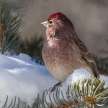
The 1912 Summer Olympics, formally known as the V Olympic Games, were an international multi-sport spectacle which took place in Stockholm, Sweden, from 5 May to 22 July 1912. Twenty-eight nations, including 48 women, competed in 102 events in 14 sports with 2,408 athletes. The games were played on July 6 with a planned release within a month, with the exception of tennis and football, and shooting. It was the final games to receive solid gold medals and Japan's attendance was the first time an Asian nation had participated. The only plan for the play, selected in 1909, was for Stockholm. The games were the first to feature handicraft competitions, women's sailing, women's diving and the first to win both the decathlon and the modern pentathlon for Jim Thorpe. For tournaments electrical synchronisation was used, and the host nation disallowed boxing. The organisers also declined to skate the figure because they wanted to support the Nordic Games. The USA won most gold medals while Denmark won the most silver medals. They are the last eight-year Summer Games up until the end of World War I. In the year 1920 the second Olympic Games was held. The Summer Olympics of 1912 had twelve positions in competition. That was the first time more than one venue had been qualified for the football event, which has been the case since then. Sweden's Olympic Stadium served as one of the equestrian venues for the Summer Olympics in 1956. Råsunda Arena was the site of the 1958 FIFA World Cup, and the 1995 FIFA Women's World Cup. It was revealed that under the initial bid plan a new stadium was to be built, initially planned to be located inside Östermalm's athletic grounds. It was determined to save costs that only one of the stadium stands will remain permanent, with the other three made of concrete and destroyed after the Olympics. Stadium expenditure had been expected to be 235,000 kronor. Arrangements were made for the use of Östermalm Athletic Grounds with the cooperation of the state commissions and Traneberg Five new sites were planned to locate the Olympic Stadium, in addition to the Östermalm Sports Grounds. The Stockholm Olympic Stadium was constructed on the site of the old Swedish Athletic Grounds to protect the remaining areas for future uses during the Olympics. Similar to other pre-existing sports stadiums, the Olympic Stadium was built north of the capital Initial support for a timber stadium was given to the sum of 400,000 Kr, but architect Torben Grut also drafted potential designs for a stone stadium. The decision to build the stone version was taken after discussions with the Swedish Central Athletics Development Commission, and a national lottery made additional funds available until there was confidence that no further funding would be needed to build the venue. Nevertheless, it was discovered that the original estimate for the stone stadium would still be too costly, and the plans were revised again to simplify construction and cut costs. An agreement was reached with a customer on 2 November 1910 that it would be finished in full by 25 May 1912. The V Olympiad Games opened formally on 6 July 1912. The Swedish Royal Family left Stockholm Palace at 10:40am, and was greeted at the Olympic Stadium by members of the IOC. Three thousand competing athletes had already assembled on nearby Östermalm Athletic Grounds, and they began to reach the stadium in alphabetic order by area according to the Swedish spelling. The Swedish team came in last but in later practise the Greek team struggled to hit the limit. A hymn was chanted, a traditional Swedish chant was played, and the prayers were read first in Swedish, then in English. Crown Prince Gustaf Adolf has briefed Queen on behalf of the Swedish Olympic Committee.
About the Creator
MB
I am a bird aficionado and really enjoy spotting them them on hikes. I greatly appreciate the variety of birds cross North America and the world. They are amazing and intelligent creatures, each so unique and with a wonderful life.






Comments
There are no comments for this story
Be the first to respond and start the conversation.